Did you know that one of the best ways to naturally fertilize your tomato plants is by using spent coffee grounds? Not only can the grounds be used to power plants at the time of planting, but they can also be used throughout the entire growing season as well!
Coffee grounds are full of the vital nutrients that tomato plants need in order to grow healthy and productive. Tomato plants need a fair amount of nitrogen, potassium, and phosphorous – which, of course, are key nutrients found in commercial fertilizer products. But they also happen to be in coffee grounds too!
But the power of coffee grounds goes beyond just being used as a fertilizer. They can actually be used to help improve the soil as well, allowing tomato plants to grow stronger and push out a more extensive root system. A root system that can improve harvest totals dramatically!
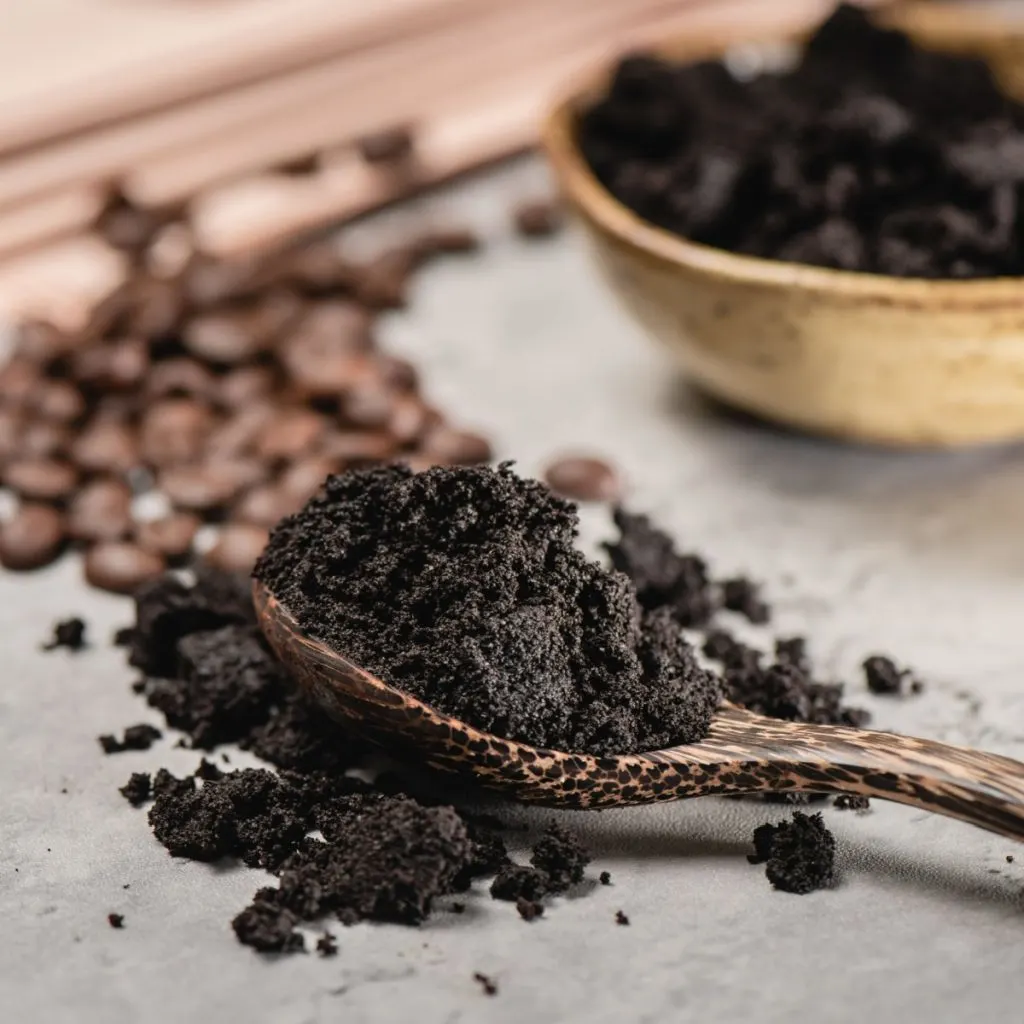
The grounds accomplish this by improving the overall soil structure, creating looser, less compacted soil. This allows the tomato plant’s roots to grow larger and spread out much easier. That benefits not only the plants growing this year, but by improving the soil, it also helps plants that will grow in the same area in the future.
In addition, coffee grounds are perfect for helping to absorb and retain moisture right where the plants need it the most – at the roots. All the more reason to use this great morning by-product to help your tomatoes!
Why & How To Use Coffee Grounds To Fertilize Tomato Plants
Using Coffee Grounds As A Fertilizer
Most fertilizers are made up of what’s often referred to as the “Big 3” of nutrients. These nutrients are Nitrogen (N), Phosphorus (P), and Potassium (K). All of these nutrients work together to help create strong and healthy tomato plants.
Nitrogen is essential for helping to grow and fill out the foliage of tomato plants. The foliage is important because plants use their leaves to convert sunlight into nutrients. In addition, the leaves help to store food and water until the plants need them.
Phosphorus helps tomato plants produce buds and flowers. Without it, tomato plants would struggle to set flowers, therefore greatly reducing yields. Phosphorus also helps stimulate root growth, helping to give plants a strong foundation. Lastly, it also helps plants manage and withstand environmental changes and stress.
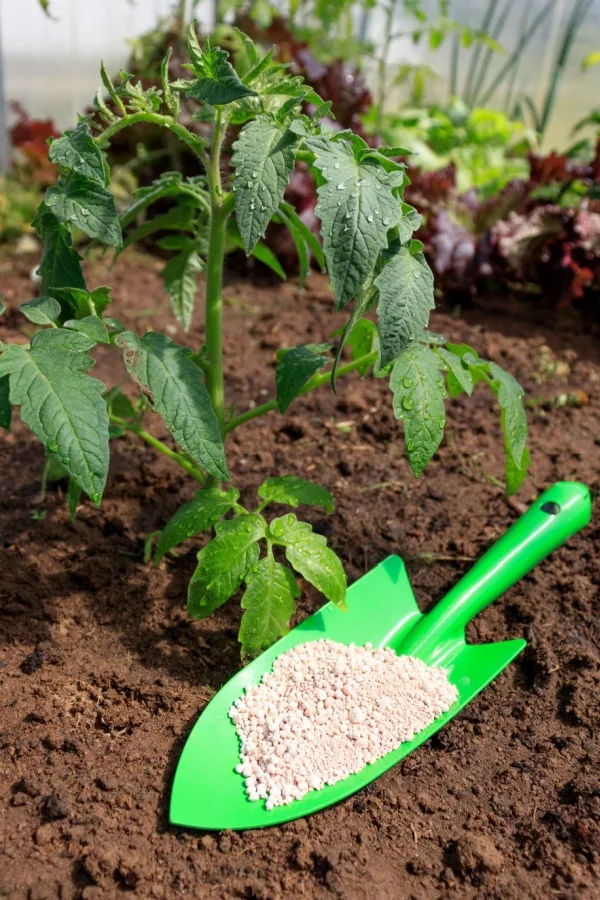
The last initial on the N-P-K label is potassium. Plants use this vital nutrient to help improve the quality of the fruit produced as well as reduce the chance of tomato plants succumbing to disease. Last but not least, potassium is critical at the time of flowering to help plants produce and ripen fruit.
It Doesn’t Stop With The “Big 3”
Thankfully, spent coffee grounds contain all of the “Big” 3 vital nutrients. But in addition, they also contain trace elements of calcium, magnesium, zinc, and iron – all nutrients that tomato plants also use to grow and produce.
What’s even better is that when the grounds are mixed into the soil, they are in a form that can be easily and quickly absorbed by tomato plants. All this and more from something you can easily source right from your very own kitchen!
Improving The Soil – How To Use Coffee Grounds To Fertilize & Power Tomato Plants
In addition to being an all-purpose fertilizer, spent coffee grounds help to improve the soil as well. One of the best ways they do this is by retaining water.
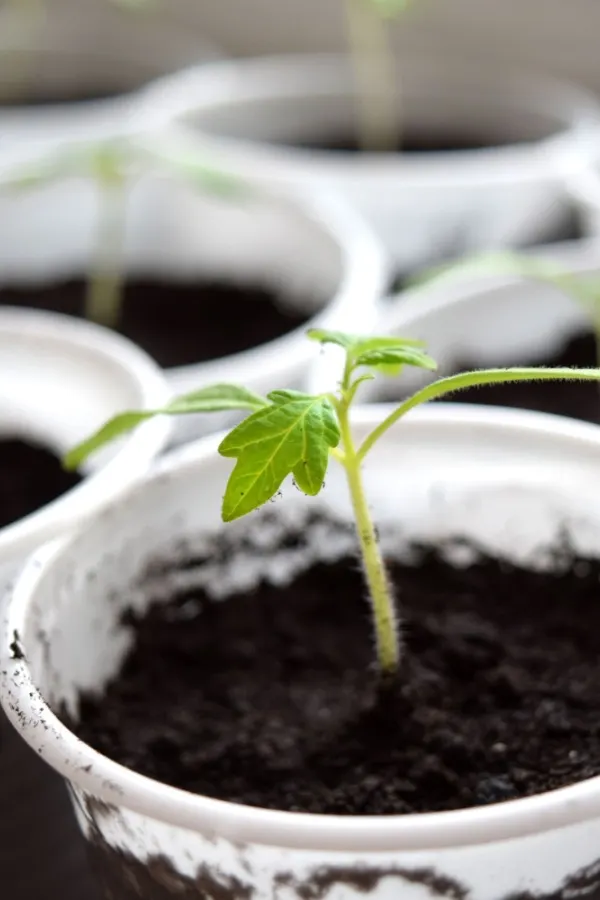
Tomato plants require adequate water throughout their entire lifecycle. Even from the beginning, tomato seeds need moisture to germinate and turn into healthy seedlings.
As plants grow, they require water to produce strong root systems, healthy stems, and lush foliage. You also need water to create full and flavorful tomatoes. Without proper water, tomato plants quickly start to suffer and their production dwindles. But spent coffee grounds can help keep water nearby.
Coffee grounds are able to hold nearly twice the amount of their weight in water. That moisture retention occurs right where the tomatoes require it most – at the root level.
Using Coffee Grounds When Planting – How To Use Coffee Grounds To Fertilize & Power Tomato Plants
In order to get the benefits of added nutrients as well as moisture control, it’s best to add spent coffee grounds at the time of planting. This initial boost of nutrients and the additional moisture can be vital to help transplants quickly establish and produce strong early root growth.
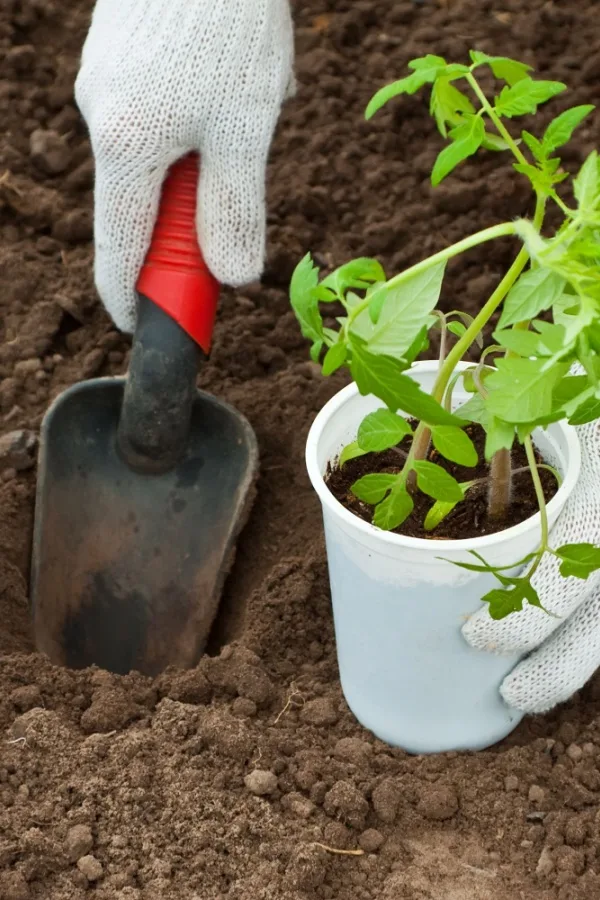
When it is time to transplant your tomatoes into your garden, raised beds, or containers, mix 2 to 3 tablespoons of coffee grounds into the planting hole before adding your transplant. Be sure to plant your tomatoes deep to give them the best chance at soaking in nutrients. See: Why To Plant Tomatoes Deep
When mixing in grounds, only use spent coffee grounds. Fresh grounds contain acids (the brewing process removes the acidity) that can change the soil’s pH and be harmful to tomato plants.
You can easily save your coffee grounds all throughout the year to always have them on hand. The easiest way to do this without having the grounds mold is to place your grounds into resealable freezer-safe storage containers or bags. When in the freezer, grounds will stay good indefinitely.
The bags make it easy to add more grounds each day. Store the grounds in the freezer until you are ready for planting. Even if you don’t drink coffee, ask friends or neighbors to save their spent grounds for you. You can even ask local coffee shops which often save grounds for gardeners for free.
Additional Uses For Coffee Grounds
Using spent coffee grounds doesn’t just stop at planting time. You can use them to top-dress tomato plants all throughout the growing season.
Every three to four weeks, sprinkle on a few tablespoons around the base of each tomato plant. This helps to provide plants with a low and steady stream of nutrients every time it rains or you water.
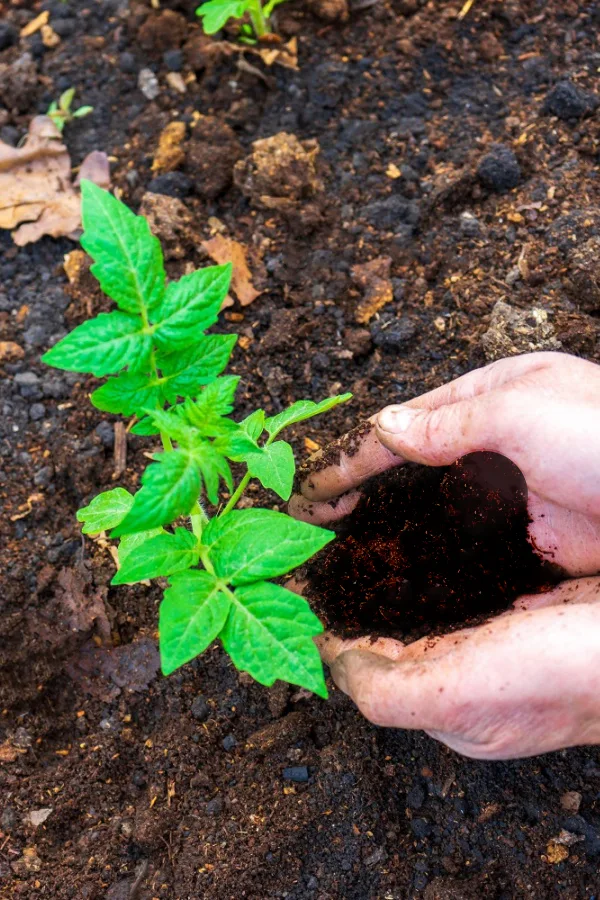
In addition, the grounds on top will also help to loosen the soil and add structure as they break down. So not only are the coffee grounds adding nutrient value to your plants, they are improving the soil at the same time.
Making A Coffee Fertilizing “Tea”
The last way you can use coffee grounds to benefit your tomato plants is to make a liquid fertilizer from the leftover grounds.
After you make an initial pot of coffee, all that remains are the weak grounds. If you simply run an additional pot of water through the maker, just like that, you have a perfect, all-purpose fertilizing tea.
Once cool, you can then use this tea to water your tomato plants to provide them with a quick boost of nutrients. You can even do the same with any leftover plain coffee. Just dilute it with equal parts water and your tea is ready to power your plants.
Here is to using spent coffee grounds – and leftover coffee this year to wake up your tomato plants!
I Grow Tomatoes
Follow Our Facebook Page For Even More Great Tomato Growing Tips! I Grow Tomatoes Facebook Page
I Grow Tomatoes is a website created for those who love all things about tomatoes – from planting and growing – to cooking and canning! We publish two articles every week, 52 weeks a year. Sign up today to follow via email! This article may contain affiliate links.
